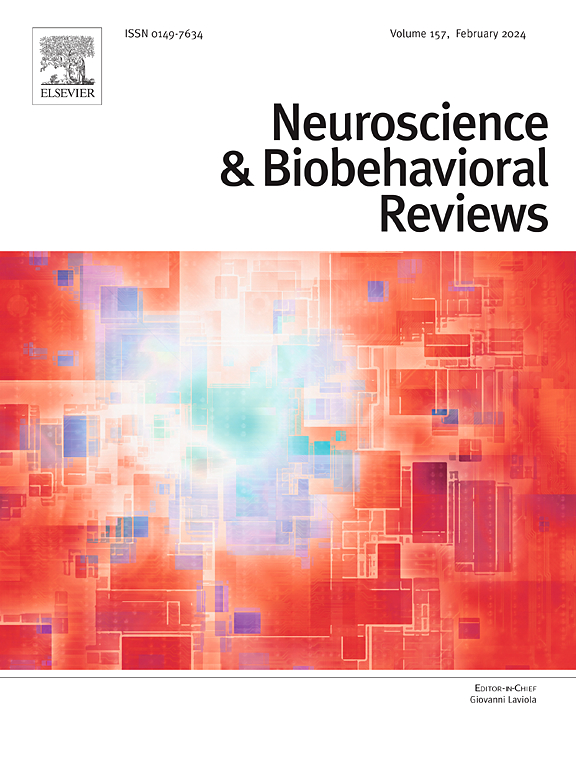The ventral midline thalamus: Participation in neurological and neuropsychiatric disorders
IF 7.9
1区 医学
Q1 BEHAVIORAL SCIENCES
引用次数: 0
Abstract
The ventral midline thalamus comprises the reuniens and rhomboid nuclei (ReRh). These nuclei are bidirectionally connected not only with two key brain structures relevant to cognition – the (medial) prefrontal cortex and the hippocampus – but also with over thirty other brain regions, often reciprocally. Over the past two decades, these nuclei have attracted increasing interest for their roles in various memory functions, including working memory and systems consolidation, as well as in behavioral flexibility, emotions such as fear, and the regulation of plasticity. Unsurprisingly, the Re nucleus, and occasionally its neighbor, the Rh nucleus, have been implicated in several neurological conditions and neuropsychiatric disorders. This review focuses on Alzheimer’s disease and epilepsy before addressing neuropsychiatric alterations such as anxiety, depression, chronic stress, schizophrenia, fetal alcohol syndrome, and fear encoding, generalization and extinction. When available, we first discuss clinical studies in humans, often very briefly, followed by experimental approaches using a wide range of animal models. The involvement of the ReRh nuclei in both memory processing and emotional regulation suggests that their dysregulation may represent a common pathological mechanism underlying the cognitive and affective symptoms shared across these disorders. Therefore, understanding the precise contributions of the ReRh nuclei to these diseases could reveal novel therapeutic targets for intervention.
腹侧丘脑中线:参与神经和神经精神疾病。
腹侧丘脑中线由团聚核和菱形核组成。这些核不仅与大脑中与认知相关的两个关键结构——前额叶皮层(内侧)和海马体——双向连接,而且还与30多个其他大脑区域双向连接。在过去的二十年里,这些核在各种记忆功能中所起的作用引起了越来越多的关注,包括工作记忆和系统巩固,以及行为灵活性,情绪(如恐惧)和可塑性调节。不出所料,Re核及其相邻的Rh核与几种神经系统疾病和神经精神疾病有关。这篇综述主要关注阿尔茨海默病和癫痫,然后再讨论神经精神改变,如焦虑、抑郁、慢性压力、精神分裂症、胎儿酒精综合征和恐惧编码、概化和消除。如果可以的话,我们首先讨论人类的临床研究,通常非常简短,然后是使用各种动物模型的实验方法。ReRh核参与记忆加工和情绪调节表明,它们的失调可能代表了这些疾病共有的认知和情感症状的共同病理机制。因此,了解ReRh核对这些疾病的确切作用可以揭示新的干预治疗靶点。
本文章由计算机程序翻译,如有差异,请以英文原文为准。
求助全文
约1分钟内获得全文
求助全文
来源期刊
CiteScore
14.20
自引率
3.70%
发文量
466
审稿时长
6 months
期刊介绍:
The official journal of the International Behavioral Neuroscience Society publishes original and significant review articles that explore the intersection between neuroscience and the study of psychological processes and behavior. The journal also welcomes articles that primarily focus on psychological processes and behavior, as long as they have relevance to one or more areas of neuroscience.

 求助内容:
求助内容: 应助结果提醒方式:
应助结果提醒方式:


